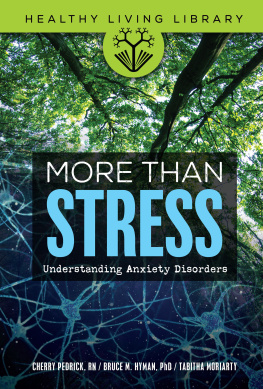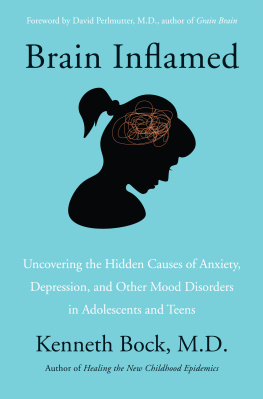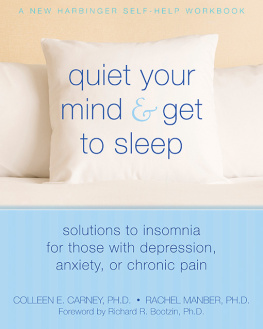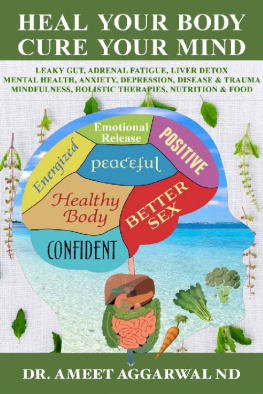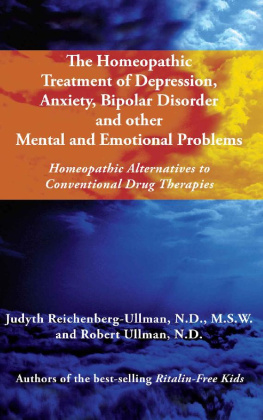David S. Younger - The Autoimmune Brain: A Five-Step Plan for Treating Chronic Pain, Depression, Anxiety, Fatigue, and Attention Disorders
Here you can read online David S. Younger - The Autoimmune Brain: A Five-Step Plan for Treating Chronic Pain, Depression, Anxiety, Fatigue, and Attention Disorders full text of the book (entire story) in english for free. Download pdf and epub, get meaning, cover and reviews about this ebook. year: 2019, publisher: Rowman & Littlefield Publishers, genre: Romance novel. Description of the work, (preface) as well as reviews are available. Best literature library LitArk.com created for fans of good reading and offers a wide selection of genres:
Romance novel
Science fiction
Adventure
Detective
Science
History
Home and family
Prose
Art
Politics
Computer
Non-fiction
Religion
Business
Children
Humor
Choose a favorite category and find really read worthwhile books. Enjoy immersion in the world of imagination, feel the emotions of the characters or learn something new for yourself, make an fascinating discovery.

- Book:The Autoimmune Brain: A Five-Step Plan for Treating Chronic Pain, Depression, Anxiety, Fatigue, and Attention Disorders
- Author:
- Publisher:Rowman & Littlefield Publishers
- Genre:
- Year:2019
- Rating:4 / 5
- Favourites:Add to favourites
- Your mark:
The Autoimmune Brain: A Five-Step Plan for Treating Chronic Pain, Depression, Anxiety, Fatigue, and Attention Disorders: summary, description and annotation
We offer to read an annotation, description, summary or preface (depends on what the author of the book "The Autoimmune Brain: A Five-Step Plan for Treating Chronic Pain, Depression, Anxiety, Fatigue, and Attention Disorders" wrote himself). If you haven't found the necessary information about the book — write in the comments, we will try to find it.
There are millions of people who experience issues related to brain healthdepression, attention issues, anxiety, forgetfulness, fatigue, and even chronic painyet cant figure out whats causing their problems and cant find any relief. They may have seen a myriad of doctors, many of whom do not take their complaints seriously, or worse, turn to the easy, often inappropriate fix of antidepressants or anti-anxiety medications. Traditional medications, supplements, or other therapies havent worked. No matter what their agefrom children to teens or seniorspeople and their loved ones are frustrated, scared, and confused by their continued poor health. Countless others display severe psychiatric symptoms that seem to come out of nowhere, ranging from tics, obsessive-compulsive behaviors and anxiety, to depression, bipolar-like mood swings, and even borderline personality disorder and suicidal ideas. Sometimes, the people affected are the only ones that notices a change to the way they think or feel, and they suffer in silence. Or, they reach out to try to get help, and are all too frequently misdiagnosed.
David Younger, a world-renowned physician, provides relief to these patients and their families. His diagnostic techniques and treatment protocols will help readers identify the true cause of their symptoms and put them on a clear path to healing so they no longer feel unbalanced, out of control, forgetful, and exhausted.
The Autoimmune Brain connects common brain health symptoms to the changes in the immune system, and particularly bacterial, viral, and parasitic infections. Younger explains his groundbreaking research and adds a new component: how traumatic stress (whether physical or emotional) and genetics affects this same triad as inextricable factors in initiating disease and brain health symptoms. In fact, a change in personality, behavior, coping style, and ones emotional state may be the first clue that there is a health problem brewing somewhere else in the body.
Readers will find new answers to troubling conditions, including: Alzheimers disease; Anxiety; Arthritis; Autism; Autonomic disturbances; Bacterial and viral infections; Bipolar Disorder; Cancer; Celiac disease and gluten intolerances; Chronic Fatigue Syndrome (now referred to as Systemic Exertion Intolerance Disease); Chronic Pain; Dementia; Depression; Endocrine Disorders; Immune modulatory therapy using IVIg; Lyme disease and co-infections; Mast cell activation syndrome; Medical cannabis; Obsessive Compulsive Disorder; Orthostatic hypotension; Peripheral Neuropathy; Porphyria; Post-Traumatic Stress Disorder; and Postural orthostatic tachycardia.
David S. Younger: author's other books
Who wrote The Autoimmune Brain: A Five-Step Plan for Treating Chronic Pain, Depression, Anxiety, Fatigue, and Attention Disorders? Find out the surname, the name of the author of the book and a list of all author's works by series.

